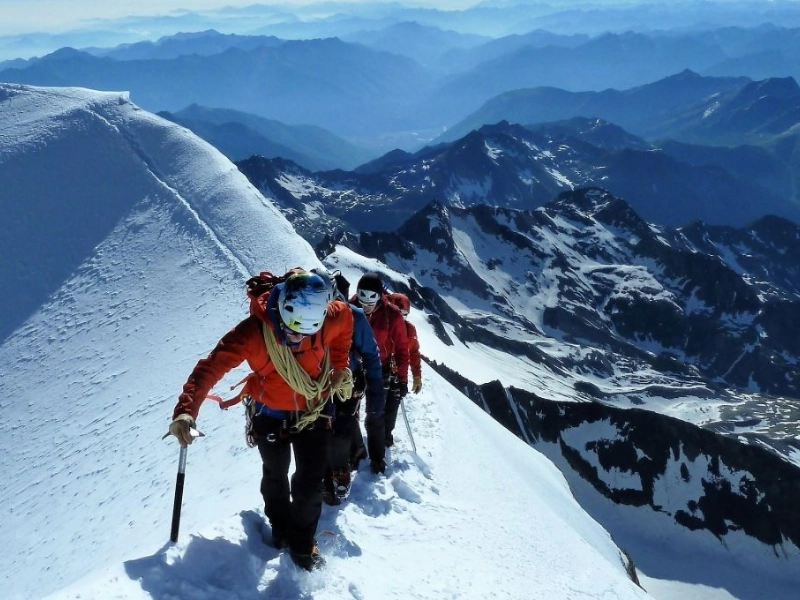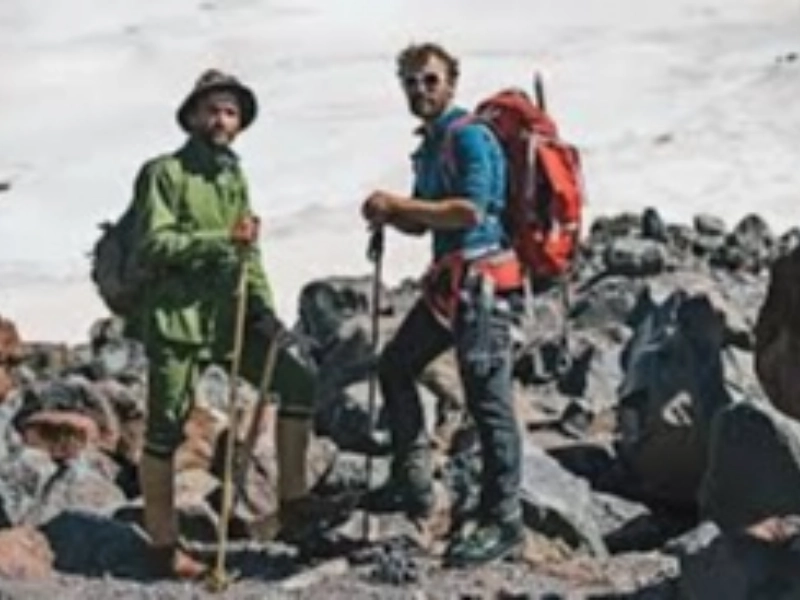A fantastic cardiovascular exercise that tones muscles and boosts endurance overall is mountaineering. Additionally, it lowers blood pressure and releases endorphins, which reduce stress. Additionally, it can enhance and strengthen one's sense of self-worth and self-esteem. But as the environment changes, climbers are facing new difficulties. These fearless explorers face increasing risks because of melting glaciers and erratic weather patterns.
 Although mountaineering is an amazing and difficult activity, the ecosystem may suffer as a result of it. It can bring non-native species into the area, erode soil, and harm delicate alpine ecosystems. Additionally, by using fossil fuels and producing trash, it can exacerbate climate change.
Climbers are particularly concerned about climate change since it might result in unexpected weather. This can be risky and makes it more difficult for them to achieve their objectives. For instance, rockfalls and ice avalanches can result from glacier melt.
Furthermore, the capacity of mountaineers to adapt to high altitudes may be impacted by climate change. This may result in a variety of issues, such as exhaustion and impaired coordination. Additionally, it may lower brain oxygen levels, which may have an impact on mental health. Fortunately, these impacts can be lessened in some ways. One strategy is to limit your number of unneeded trips to times when the weather is favorable. Using renewable energy sources and cutting back on energy use are two other ways.
Although mountaineering is an amazing and difficult activity, the ecosystem may suffer as a result of it. It can bring non-native species into the area, erode soil, and harm delicate alpine ecosystems. Additionally, by using fossil fuels and producing trash, it can exacerbate climate change.
Climbers are particularly concerned about climate change since it might result in unexpected weather. This can be risky and makes it more difficult for them to achieve their objectives. For instance, rockfalls and ice avalanches can result from glacier melt.
Furthermore, the capacity of mountaineers to adapt to high altitudes may be impacted by climate change. This may result in a variety of issues, such as exhaustion and impaired coordination. Additionally, it may lower brain oxygen levels, which may have an impact on mental health. Fortunately, these impacts can be lessened in some ways. One strategy is to limit your number of unneeded trips to times when the weather is favorable. Using renewable energy sources and cutting back on energy use are two other ways.
 For thousands of years, the majestic mountains have captivated daring climbers who are willing to test their mettle on such harsh landscapes. But mountaineering is changing dramatically as a result of global warming and increasingly erratic weather patterns.
The influence of glacier melting and ice avalanches, which can be lethal to climbers who are not adequately trained or equipped, is one of the main obstacles. Furthermore, glaciers have the potential to collapse and form crevasses, which pose a risk to climbers attempting to traverse them.
The quantity of trash that mountain climbers leave behind is another major issue. Animals that consume this garbage or become entangled in it may become poisoned. In addition to offering helpful guidance on how to lessen their influence, the British Mountaineering Council regularly educates hill walkers and rock climbers on how their activities can damage the environment. In addition, the book provides a thorough presentation of study findings and a framework for additional research.
For thousands of years, the majestic mountains have captivated daring climbers who are willing to test their mettle on such harsh landscapes. But mountaineering is changing dramatically as a result of global warming and increasingly erratic weather patterns.
The influence of glacier melting and ice avalanches, which can be lethal to climbers who are not adequately trained or equipped, is one of the main obstacles. Furthermore, glaciers have the potential to collapse and form crevasses, which pose a risk to climbers attempting to traverse them.
The quantity of trash that mountain climbers leave behind is another major issue. Animals that consume this garbage or become entangled in it may become poisoned. In addition to offering helpful guidance on how to lessen their influence, the British Mountaineering Council regularly educates hill walkers and rock climbers on how their activities can damage the environment. In addition, the book provides a thorough presentation of study findings and a framework for additional research.
 While mountaineering can have a lot of positive effects on the environment, there are also risks involved in this sport. The most frequent dangers include equipment failure and avalanches. These dangers can be reduced with careful consideration and preparation.
Climbers ought to be mindful of these dangers and take precautions to preserve their surroundings. They ought to refrain from consuming animals, use reusable water bottles, and promote local businesses. This will lessen the effect on wildlife and natural resources.
They should also carefully organize their travels. They should choose climbing routes that are safe to climb and avoid going too high in hazardous places. Additionally, they must determine a turnaround time that will enable them to retreat if they get too near the summit. It will prevent deaths. This is particularly crucial when climbing mountains with a high death rate, like Mount Everest.
While mountaineering can have a lot of positive effects on the environment, there are also risks involved in this sport. The most frequent dangers include equipment failure and avalanches. These dangers can be reduced with careful consideration and preparation.
Climbers ought to be mindful of these dangers and take precautions to preserve their surroundings. They ought to refrain from consuming animals, use reusable water bottles, and promote local businesses. This will lessen the effect on wildlife and natural resources.
They should also carefully organize their travels. They should choose climbing routes that are safe to climb and avoid going too high in hazardous places. Additionally, they must determine a turnaround time that will enable them to retreat if they get too near the summit. It will prevent deaths. This is particularly crucial when climbing mountains with a high death rate, like Mount Everest.
 It's crucial to respect the local ecology and traditions when mountaineering. The Argeos Charter of the UIAA encourages the preservation of customary languages, attire, and handicrafts while cautioning against economic development in the mountains that can negatively impact the local population.
Sadly, some climbers don't really adhere to these guidelines. For instance, they dump a ton of rubbish on the mountain, endangering wildlife that may consume it or become entangled in it, as well as contaminating water sources.
A climber needs to be conscious of their influence and take action to lessen it. Using repurposed gear, preventing environmental contamination, and encouraging environmentally friendly tourism are a few examples of how to do this. It may also entail promoting laws that deal with climate change, which is already having an impact on the mountains and other areas that are popular destinations for mountaineering. With glaciers melting, access to the most famous mountains in the world is decreasing, increasing the risk of climbing them. This may have an impact on upcoming generations of hikers and climbers.
It's crucial to respect the local ecology and traditions when mountaineering. The Argeos Charter of the UIAA encourages the preservation of customary languages, attire, and handicrafts while cautioning against economic development in the mountains that can negatively impact the local population.
Sadly, some climbers don't really adhere to these guidelines. For instance, they dump a ton of rubbish on the mountain, endangering wildlife that may consume it or become entangled in it, as well as contaminating water sources.
A climber needs to be conscious of their influence and take action to lessen it. Using repurposed gear, preventing environmental contamination, and encouraging environmentally friendly tourism are a few examples of how to do this. It may also entail promoting laws that deal with climate change, which is already having an impact on the mountains and other areas that are popular destinations for mountaineering. With glaciers melting, access to the most famous mountains in the world is decreasing, increasing the risk of climbing them. This may have an impact on upcoming generations of hikers and climbers.